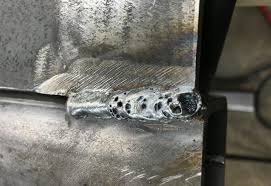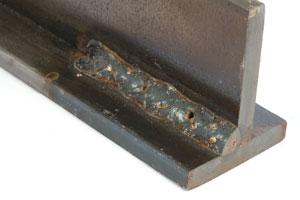What is Porosity in Welding: Trick Aspects and Their Impact on Weld Top Quality
What is Porosity in Welding: Trick Aspects and Their Impact on Weld Top Quality
Blog Article
The Science Behind Porosity: A Comprehensive Guide for Welders and Fabricators
Comprehending the elaborate mechanisms behind porosity in welding is important for welders and makers aiming for impressive workmanship. From the structure of the base materials to the intricacies of the welding procedure itself, a wide variety of variables conspire to either intensify or ease the visibility of porosity.
Comprehending Porosity in Welding
FIRST SENTENCE:
Exam of porosity in welding discloses essential insights right into the honesty and top quality of the weld joint. Porosity, identified by the presence of dental caries or spaces within the weld steel, is a typical concern in welding processes. These gaps, otherwise appropriately attended to, can jeopardize the architectural stability and mechanical residential properties of the weld, resulting in potential failures in the completed item.

To spot and measure porosity, non-destructive testing approaches such as ultrasonic testing or X-ray inspection are usually used. These techniques enable the identification of interior problems without endangering the honesty of the weld. By analyzing the size, form, and distribution of porosity within a weld, welders can make enlightened decisions to improve their welding procedures and accomplish sounder weld joints.

Aspects Influencing Porosity Formation
The event of porosity in welding is affected by a myriad of variables, varying from gas shielding efficiency to the details of welding criterion settings. Welding criteria, including voltage, existing, travel speed, and electrode type, additionally impact porosity development. The welding technique utilized, such as gas steel arc welding (GMAW) or shielded metal arc welding (SMAW), can influence porosity formation due to variations in heat circulation and gas protection - What is Porosity.
Results of Porosity on Weld Quality
The presence of porosity additionally deteriorates the weld's resistance to Visit Website corrosion, as the entraped air or gases within the spaces can react with the surrounding environment, leading to deterioration over time. In addition, porosity can hinder the weld's ability to endure pressure or effect, further threatening the general quality and integrity of the welded structure. In critical applications such as aerospace, automotive, or architectural building and constructions, where security and longevity are paramount, the destructive effects of porosity on weld quality can have serious consequences, stressing the importance of reducing porosity through correct welding methods and procedures.
Techniques to Minimize Porosity
To enhance the high quality of welded joints and make sure structural stability, welders and fabricators employ particular techniques focused on minimizing the formation of gaps and tooth cavities within the product throughout the welding process. One efficient technique to decrease porosity is to guarantee proper product prep work. This includes extensive cleansing of the base steel to eliminate any kind of pollutants such as oil, oil, or moisture that can contribute to porosity development. Furthermore, using the ideal welding parameters, such as the proper voltage, present, and travel rate, is important in protecting against Extra resources porosity. Preserving view it a regular arc size and angle throughout welding also helps in reducing the probability of porosity.

Making use of the appropriate welding technique, such as back-stepping or using a weaving motion, can likewise aid disperse heat equally and reduce the possibilities of porosity formation. By applying these methods, welders can successfully lessen porosity and generate premium bonded joints.

Advanced Solutions for Porosity Control
Executing advanced modern technologies and cutting-edge techniques plays a pivotal function in accomplishing remarkable control over porosity in welding processes. One sophisticated service is making use of sophisticated gas blends. Shielding gases like helium or a mixture of argon and hydrogen can assist minimize porosity by giving better arc security and enhanced gas coverage. Additionally, using sophisticated welding techniques such as pulsed MIG welding or changed atmosphere welding can also aid reduce porosity problems.
Another innovative service includes the usage of advanced welding equipment. Using equipment with integrated attributes like waveform control and sophisticated power sources can boost weld top quality and reduce porosity dangers. Moreover, the implementation of automated welding systems with exact control over specifications can considerably minimize porosity problems.
Additionally, including advanced surveillance and inspection innovations such as real-time X-ray imaging or automated ultrasonic screening can assist in discovering porosity early in the welding process, enabling immediate rehabilitative actions. On the whole, incorporating these innovative services can substantially enhance porosity control and enhance the overall top quality of bonded components.
Final Thought
In final thought, understanding the science behind porosity in welding is vital for welders and makers to generate high-grade welds - What is Porosity. Advanced services for porosity control can even more enhance the welding procedure and guarantee a solid and trustworthy weld.
Report this page